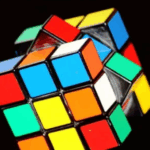Accelerated Resolution Therapy (ART)
Accelerated Resolution Therapy (ART) is a relatively new psychotherapy approach that’s gaining attention as an evidence-based treatment for trauma and stress-related disorders, including PTSD, depression, and resilience. It’s known for being brief (typically 1-5 sessions) and less reliant on homework or extensive skills practice. Accelerated Resolution Therapy focuses o n re-framing and re-processing traumatic memories by utilizing techniques like imaginal exposure, perceptual reframing, and relaxation methods.
n re-framing and re-processing traumatic memories by utilizing techniques like imaginal exposure, perceptual reframing, and relaxation methods.
What to expect from your ART appointment:
Does Accelerated Resolution Therapy work?
Let’s look at ART and its evidence base:
What is Accelerated Resolution Therapy(ART)?
ART Re-framing and Re-processing:
Accelerated Resolution Therapy aims to help individuals re-process and re-file past traumatic events, shifting their emotional response from negative to positive or neutral.
ART Techniques:
ART employs techniques like imaginal exposure, perceptual reframing, and relaxation methods to help clients positively or neutrally re-frame and re-file traumatic memories.
ART Short-term:
Accelerated Resolution Therapy is designed to be a brief intervention, often completed in just a few sessions.
ART Focus on Memory Reconsolidation
ART leverages the principle of memory reconsolidation, which suggests that when a memory is activated, Accelerated Resolution Therapy can be modified before it is re-stored.
Evidence Base for Accelerated Resolution Therapy:
-
Effectiveness for PTSD:
Studies have shown ART to be effective in reducing PTSD symptoms in a relatively short time frame.
-
Compared to Other Therapies:
Research suggests Accelerated Resolution Therapy can be as effective as, or even more effective than, traditional PTSD treatments, while being quicker, easier to learn, and more cost-efficient.
-
Various Populations:
Studies have indicated that Accelerated Resolution Therapy may be beneficial for civilians, military personnel, veterans, and even individuals with homeless status who are experiencing PTSD.
-
SAMHSA Recognition:
The Substance Abuse and Mental Health Services Administration (SAMHSA has recognized ART as an evidence-based treatment for trauma-related disorders, depression, and resilience.
-
Ongoing Research:
While promising, more extensive studies are needed to fully assess the long-term impact and effectiveness of ART across different populations and trauma types.
How Accelerated Resolution Therapy Works:
-
Goal-Directed Hand Movements:
ART uses goal-directed hand movements that are believed to stimulate neural circuits in the limbic system, which can help re-file traumatic memories.
-
Re-experiencing the Trauma:
Clients may briefly re-experience the trauma under supervision, allowing them to re-process and re-file the memory in a way that reduces its emotional impact.
-
Re-framing and Refiling:
By activating the memory and modifying it within the “reconsolidation window,” ART aims to rewire the emotional response to the traumatic event, making it less distressing.

